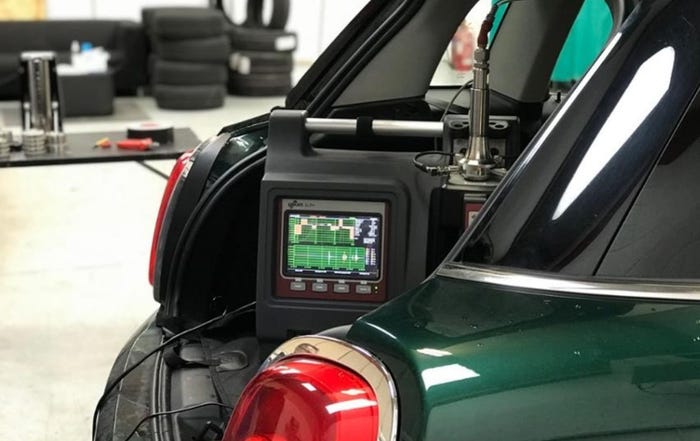Sounds of Silence
A Toyota Prius with the rumble of a V-12 engine or the futuristic swoosh of a Star Wars spacecraft? Sounds quirky, but a new line of noise-management technology from audio-experts Harman Automotive and Lotus Engineering could make such personalization possible. For now, the aim of HALOsonic Noise Management is to help auto makers meet stricter fuel-economy rules and coming safety regulations designed

A Toyota Prius with the rumble of a V-12 engine or the futuristic swoosh of a Star Wars spacecraft?
Sounds quirky, but a new line of noise-management technology from audio-experts Harman Automotive and Lotus Engineering could make such personalization possible.
For now, the aim of HALOsonic Noise Management is to help auto makers meet stricter fuel-economy rules and coming safety regulations designed to make electric vehicles more pedestrian-friendly.
The technology also makes EVs more comfortable for passengers by damping noises internal-combustion engines typically would drown out and eliminate those created by fuel-saving solutions for the ICE such as direct-injection.
HALOsonic additionally could give auto makers the opportunity to “brand” the sound of their products.
U.S. regulators currently are crafting legislation that would compel auto makers to add some sort of sound to their electrified vehicles, which under battery power operate almost silently.
Researchers say EVs are two times more likely to become involved in a crash while at low speeds. Pedestrians, especially the blind, are at particular risk.
The two most-notable recent EVs to launch in the U.S. take separate approaches to alerting pedestrians. The Chevrolet Volt extended-range EV employs three horn pulses operated manually by the driver via the turn-signal stalk.
The Nissan Leaf EV releases a sound wave to alert pedestrians. Drivers temporarily can disable the system.
Japan appears closest to enacting a standard by releasing in January the first guidelines for OEMs ahead of a future rule. In response, Toyota Motor Corp. earlier this year began offering a noise-making option on the Prius to get out in front of the pending regulations.
“Expect these new regulations anywhere in the world where EVs are sold,” says Jonathan Lane, director-active noise control systems at Harman.
The wild card is what sound standard regulators will decide upon. If recent history serves as an indicator, it may vary between regions.
The HALOsonic collaboration between Harman-Lotus delivers to auto makers two technologies — an active noise control (ANC) for inside the car and electronic sound synthesis (ESS) for both interior and exterior applications.
In an external application, ESS generates an adjustable synthetic engine noise in the forward direction. The sound and pitch change with vehicle speed, giving pedestrians clues to the oncoming automobile's speed, direction and distance.
The sound is projected forward, Lane says, because that's the case with traditional vehicles, but it also minimizes the noise pollution EVs are intended to reduce and projects it away from passengers.
The extra hardware includes an external speaker system specially designed to handle the durability requirements of a vehicle, as well as a control module/amplifier and a module to monitor road speed, because above 20 mph (32 km/h) rolling noise from the tires is enough to alert pedestrians.
The basic ANC hardware includes a controller, a module to monitor engine speed, tiny interior microphones to keep track of cabin noises and a vehicle's existing audio speakers.
The technology is so smart, Lane says, it can tell the difference between a low cello note and a suspension boom, and then cancel out the correct noise.
The technology enters production this year at Harman sites globally.
WARDSAUTO.COM
Silent EVs Cause Industry to Ponder NVH Issues WardsAuto.com/ar/evs_nvh_issues_100212
About the Author
You May Also Like





